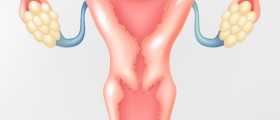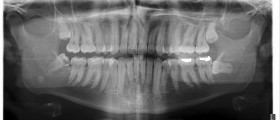
What Are Ovarian Cysts?
An ovarian cyst is a sac usually filled with some fluid and it grows from the ovary. The person may have one or several ovarian cysts and they may affect one or both ovaries. The size of ovarian cyst varies as well. Some of the cysts are benign while others represent malignant tumor that develops in a form of cysts. There are several types of ovarian cysts and only after the surgical removal of the cyst and its pathohistological examination the doctor can confirm the very type of the ovarian cyst.
Many ovarian cysts are found accidentally during routine ultrasound of the pelvis. On the other hand, the cyst may be large enough and cause some difficulties such as pain in the pelvis, changes in menstrual cycle and in more severe cases a woman may develop cyst torsion or rupture.
Rupture of ovarian cyst is considered to be a serious condition and is generally treated surgically. Symptoms and signs of the rupture may vary a lot. The very rupture can be totally ignored since the pain that occurs during the rupture resembles the pain and discomfort associated with menstruation. Despite previously mentioned there are subtle symptoms that may for sure point to the rupture of the ovarian cyst.
Some of the Most Common Symptoms of Ovarian Cyst Bursting
Hemorrhage that is not connected to normal menstrual bleeding is one of the most frequent signs of ovarian cyst bursting. The bleeding is caused by the very rupture. Furthermore, irregular periods may also point to the bursting of the ovarian cyst. The woman may experience extremely heavy period (totally different symptoms and signs she usually encounters during normal menstrual cycle).
Another potential symptom of an ovarian cyst bursting is frequent urination or an urge to urinate recurrently. These problems are associated with the pressure on the bladder. The urination can be accompanied by pain and discomfort.
Pain in the pelvis is one of the most reliable symptoms of an ovarian cyst bursting. Unlike the pain associated with menstruation, pain caused by a cyst rupture is more severe and long-lasting.
Some women may feel nausea and vomit. These two symptoms must not be neglected especially if there are some of the already mentioned symptoms and signs present.
And finally, in some cases physical changes such as abnormal weight gain, change in body structure and tenderness in the breasts may point to an ovarian cyst bursting.
It is essential to set the diagnosis in a timely manner and treat the woman adequately. In case of cyst rupture conservative treatment generally fails to provide with desirable results. Still, certain drugs are administered and the goal of such treatment is reduction of pain. On the other side, surgery is highly effective especially in case of complications associated with ovarian cyst rupture.

















Your thoughts on this
Loading...